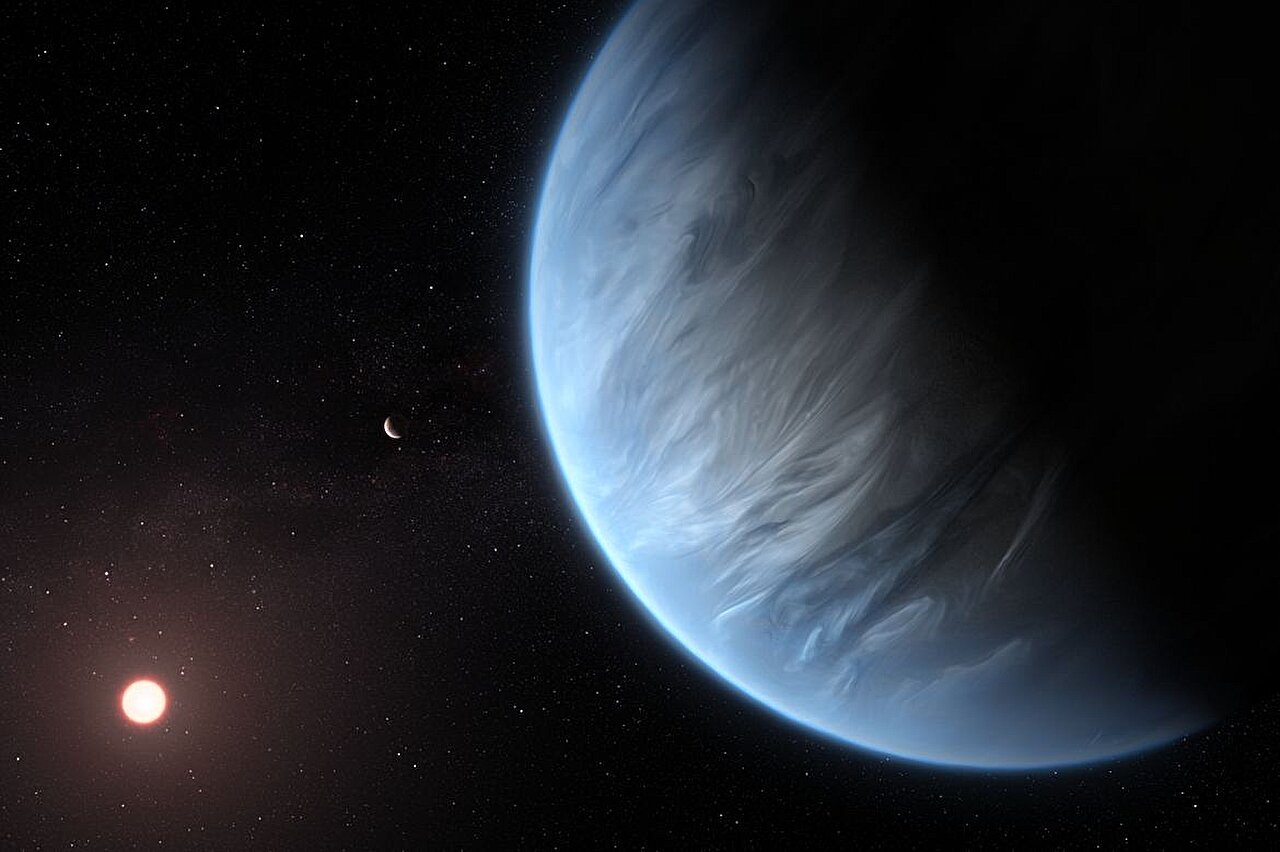Scientists learn more and more about the chemical composition of exoplanets. On Earth, we are used to hydrogen in the atmosphere, usually in the form of water vapor. However, simulations show that much more interesting combinations are possible on other worlds.

Unexpected mixtures of gases in planetary atmospheres
All planets are composed of gas, ice, rock, and metal, and models of planet formation generally assume that these materials do not react chemically with each other. But what if some of them react?
Planetary scientists at the University of California, Los Angeles and Princeton University asked this question and got an unexpected answer: Under the intense heat and pressure of the newborn planets, water and gas react with each other to create unexpected mixtures in the atmospheres of young planets ranging in size from Earth to Neptune and “rainfall” deep in the atmospheres.
Recent research shows that the most common type of planets in our galaxy – planets ranging in size from Earth to Neptune – typically form with hydrogen atmospheres, leading to conditions where hydrogen and the planet’s molten interior interact over millions and billions of years. The interaction between the atmosphere and the subsurface is critical to understanding the formation and evolution of these bodies and what may lie beneath these atmospheres.
Computer simulations
But the temperatures and pressures are so extreme that laboratory experiments to study them are nearly impossible. The researchers used supercomputers at the University of California and Princeton University to perform quantum mechanical molecular dynamics simulations to investigate how hydrogen and water, two of the most important constituents of a planet, interact over a wide range of pressures and temperatures on planets the size of Neptune and smaller. The results are published in The Astrophysical Journal Letters.
“We usually think that the basics of physics and chemistry are already known,” says study co-author Lars Stixrude, a professor of Earth, planetary and space sciences at the University of California, Los Angeles. “We know when things melt, when they dissolve and when they freeze. But when it comes to the deep insides of the planets, we just don’t know. There’s no textbook where we can look these things up, and we have to predict them.”
The researchers created simulations of a system divided into hydrogen and water, with several hundred atoms of each, and calculated how they interact with each other at the quantum level. The atoms reacted naturally as they would in a laboratory experiment under the same conditions.
Separation of water and hydrogen
Planets can be extremely hot when they are born or if they are very close to their parent stars, and these computational experiments have shown that such planets will have atmospheres composed of a homogeneous mixture of hydrogen and water. But as planets age, their temperatures drop, and hydrogen and water begin to separate.
Further water deposition could not only generate an unexpected amount of heat in the depths of these worlds, but also change the composition of the atmospheres and evolution of these planets for billions of years.
“Over time, as the planet cools, clouds begin to form in the outer regions of the atmosphere as water condenses,” said study first author Akash Gupta, who conducted the research as a doctoral student at the University of California, Los Angeles, and now he is a postdoctoral fellow in the 51 Pegasi b and Harry H. Hess Postdoctoral Fellow at Princeton University.
“Shortly thereafter, water and hydrogen would begin to separate deep within the atmosphere—a pivotal event, given that the majority of the planet’s hydrogen and water reserves lie in these depths. This would then lead to a ‘rainfall’ deep inside the planet’s atmosphere as heavier water sinks while the lighter hydrogen rises, resulting in an outer, hydrogen-rich envelope and an inner, water-rich one.”
The discovery may also help solve the mystery of why Uranus radiates much less heat than Neptune, despite the fact that these planets are very similar in size.
Mixed atmospheres of exoplanets
The work has implications for planets outside our Solar System, such as K2-18 b and TOI-270 d, which are considered potentially habitable worlds with hydrogen atmospheres covering water oceans. However, the internal temperatures of such exoplanets, if high enough, may lie entirely in the regime where hydrogen and water cannot separate, and they will consist of a single homogeneous hydrogen-water liquid.
“If water and hydrogen are indeed substantially mixed throughout a planet’s interior, the structure and thermal evolution of Earth- and Neptune-like exoplanets can be substantially different from the standard models typically used in the field,” said Hilke Schlichting, a co-author of the study and professor of Earth, planetary and space sciences at the University of California, Los Angeles.
“On the other hand, colder planets may have a separate layer enriched with water, possibly in a liquid state.”
As such, the study provides a physical basis for narrowing the search for planetary systems in our galaxy in which water-rich exoplanets could have water oceans or atmospheres in which hydrogen and water are entirely mixed, and also reveals what possibly drives this bifurcation.
According to phys.org


